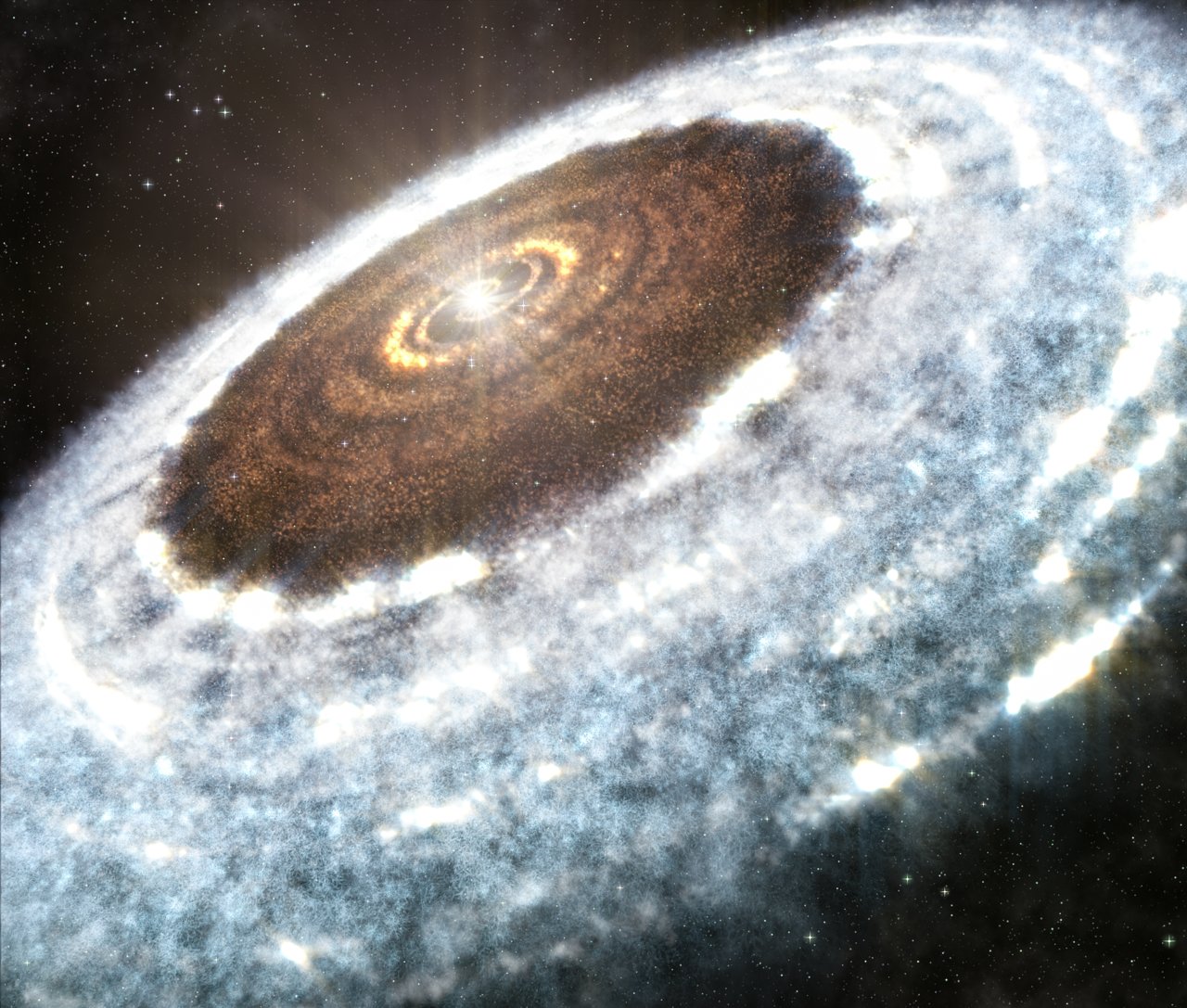James Webb Space Telescope spots the icy building blocks of life swirling around infant stars
"This finding contributes to one of the long-standing questions in astrochemistry."

Using the James Webb Space Telescope, astronomers have identified several of the icy building blocks of life in the gas and dust swirling around two infant stars, or "protostars." The molecules spotted range from relatively simple molecules like methane to complex compounds like acetic acid and ethanol.
Complex organic molecules (COMs) in solid, icy form had previously been predicted to exist around protostars that have not yet begun birthing planets around them. This prediction, however, stemmed from Earth-based lab experiments. The theory had been tentatively confirmed in the past using space telescopes, including the James Webb Space Telescope itself. The JWST found diverse ices in the darkest, coldest regions of a molecular cloud as part of the JWST Early Release Science Ice Age program.
But thanks to observations of the clouds around protostars IRAS23385 and IRAS 2A, taken with the JWST's highly sensitive Mid-Infrared Instrument (MIRI) as part of the James Webb Observations of Young ProtoStars (JOYS+) program, the presence of these ices has now been confirmed.
Of particular interest for future study will be the material around the low-mass protostar IRAS 2A, which may have similarities with our sun — when the sun was in its primordial stages over 4.6 billion years ago, that is. That means the same chemical ices identified around IRAS 2A were likely present in the first stages of our solar system's own development, eventually finding themselves delivered to the primitive Earth.
Related: James Webb Space Telescope complicates expanding universe paradox by checking Hubble's work
"This finding contributes to one of the long-standing questions in astrochemistry," team leader and Leiden University researcher Will Rocha said in a statement. "What is the origin of COMs in space? Are they made in the gas phase or in ice? The detection of COMs in ices suggests that solid-phase chemical reactions on the surfaces of cold dust grains can build complex kinds of molecules."
Familiar molecules around distant stars
It's worth noting that COMs have technically been detected around protostars before, but in the form of warm gas. Research has suggested that these gases are created when the solid ice is transformed into such gas directly, therefore skipping the liquid phase. This is a process called "sublimation."
Breaking space news, the latest updates on rocket launches, skywatching events and more!
Detecting these icy COMs could, however, help better understand the origins of even larger molecules in space.
Additionally, scientists are eager to better understand how molecules like COMs get delivered to planets in the latter evolutionary stages of protostars, when these stellar infants have nearly gathered enough mass from their surroundings to trigger the fusion of hydrogen to helium in their cores.
One suggestion is that because icy materials are more easily transported through planetary disks than gases are, COMs may be incorporated into forming comets as solid matter. These comets could then collide with forming planets to deliver these COMs, potentially allowing life as we know it to flourish.
"All of these molecules can become part of comets and asteroids and eventually new planetary systems when the icy material is transported inward to the planet-forming discs as the protostellar system evolves," JOYS+ program coordinator and Leiden University researcher Ewine Dishoeck said.
The team successfully identified ices of acetaldehyde, ethanol (which we call alcohol), methyl formate and acetic acid, which is the acid found in vinegar. The crew also spotted less complex molecules in the form of ice including methane, sulfur dioxide, formaldehyde and formic acid, which is the molecule that makes bee stings painful.
The detection of sulfur dioxide may be particularly useful in understanding the formation of habitable planets around stars. This is because research has suggested that this compound, made up of sulfur and oxygen, as well as other sulfur-containing compounds, played an important role in driving metabolic reactions on the primitive Earth.
The team also detected negative ions, which are atoms with an overabundance of electrons, in the clouds of gas and dust around these protostars, which could be important to the formation of salts that help develop chemical complexity at high temperatures. The discovery of such ions hints that ices around these protostars could be more complex in composition than suspected, making them important targets for future research.
"We look forward to following this astrochemical trail step by step with more JWST data in the coming years," Dishoeck concluded.
The team's research is published in the journal Astronomy & Astrophysics.

Robert Lea is a science journalist in the U.K. whose articles have been published in Physics World, New Scientist, Astronomy Magazine, All About Space, Newsweek and ZME Science. He also writes about science communication for Elsevier and the European Journal of Physics. Rob holds a bachelor of science degree in physics and astronomy from the U.K.’s Open University. Follow him on Twitter @sciencef1rst.


